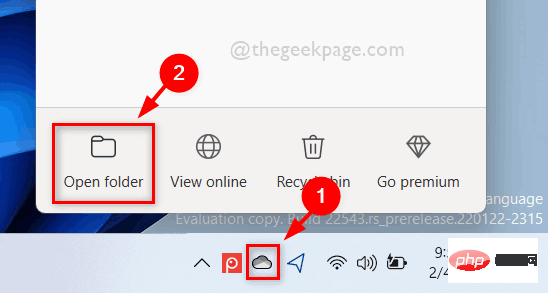In modern web applications, the use of frameworks to build back-end services has become mainstream. This is because the framework is able to provide many features and optimizations to quickly develop high-performance applications. In PHP, there are many frameworks to choose from, and one of the very popular frameworks is the Slim framework. It is a lightweight PHP framework that provides a simple yet powerful toolset for building high-performance web applications.
In the core of the Slim framework, the routing component is one of the most basic parts. It can easily map URLs to corresponding processing functions. In this article, we will explore how to use routing components in Slim framework.
- Install the Slim framework
First, we need to install the Slim framework. You can use composer to install it. Open a terminal and enter the following command:
composer require slim/slim "^4.0"
This will install the Slim framework into the current PHP project.
- Building a Basic Route
Now, let’s build our first route, which will respond to an HTTP GET request to the root URL and return a simple “Hello World" message. Create a new php file in the project root directory and enter the following code:
<?php
use SlimFactoryAppFactory;
use PsrHttpMessageResponseInterface as Response;
use PsrHttpMessageServerRequestInterface as Request;
require __DIR__ . '/vendor/autoload.php';
$app = AppFactory::create();
$app->get('/', function (Request $request, Response $response) {
$response->getBody()->write("Hello World");
return $response;
});
$app->run();Here we use the AppFactory class provided by Slim to create a new application instance. Then use the $app->get() function to specify how to handle when an HTTP GET request for the root URL is received. In this case, we use a simple anonymous function to return an HTTP response with a "Hello World" message. Finally, we call $app->run() to start the application and wait to enter a loop to respond to the HTTP request.
- Routes with Parameters
Next, we will explore how to use parameters in routing. For example, you might need to extract certain values from a dynamic URL. In the following example, we will match URLs starting with "/hello/" and extract the following strings as parameters for processing.
$app->get('/hello/{name}', function (Request $request, Response $response, $args) {
$name = $args['name'];
$response->getBody()->write("Hello, $name");
return $response;
});In this case, we use curly brackets to specify parameters. In anonymous functions, we use the $args array to access the parameters.
- Using routing groups
In some applications, there may be an entire sub-path with the same routing structure. At this time, we can use routing groups to simplify the code structure. For example, we might have a URL with a structure like the following, where version is a dynamic parameter:
/api/{version}/usersBy using route groups, we can split it into two parts, a route group and a separate route :
$usersRoutes = function ($app) {
$app->get('', function (Request $request, Response $response) {
$response->getBody()->write("List all users");
return $response;
});
$app->get('/{id}', function (Request $request, Response $response, $args) {
$id = $args['id'];
$response->getBody()->write("Show user with ID $id");
return $response;
});
};
$app->group('/api/{version}', function ($app) use ($usersRoutes) {
$app->group('/users', $usersRoutes);
});In this example, we first create a variable $usersRoutes, which stores a set of user-related routes. Next, we create a new routing group /users under routing group /api/{version} and use the previously defined $usersRoutes to handle all User-related routes.
- Conclusion
The Slim framework provides a simple and powerful routing system that can easily map URLs to processing functions. This article provides some basic usage methods. If you want to build more complex applications, you need to read the official documentation of the Slim framework in depth.
The above is the detailed content of How to use routing components in Slim framework?. For more information, please follow other related articles on the PHP Chinese website!
 如何在Go中使用命名管道?May 11, 2023 pm 04:22 PM
如何在Go中使用命名管道?May 11, 2023 pm 04:22 PM命名管道是一种在操作系统中相对比较低级的进程通信方式,它是一种以文件为中介的进程通信方式。在Go语言中,通过os包提供了对命名管道的支持。在本文中,我们将介绍如何在Go中使用命名管道来实现进程间通信。一、命名管道的概念命名管道是一种特殊的文件,可以被多个进程同时访问。在Linux系统中,命名管道是一种特殊的文件类型,它们存在于文件系统的某个位置上,并且可以在
 如何在Go中使用第三方库?May 11, 2023 pm 03:30 PM
如何在Go中使用第三方库?May 11, 2023 pm 03:30 PM在Go语言中,使用第三方库是非常方便的。许多优秀的第三方库和框架可以帮助我们快速地开发应用程序,同时也减少了我们自己编写代码的工作量。但是如何正确地使用第三方库,确保其稳定性和可靠性,是我们必须了解的一个问题。本文将从以下几个方面介绍如何使用第三方库,并结合具体例子进行讲解。一、第三方库的获取Go语言中获取第三方库有以下两种方式:1.使用goget命令首先
 如何在PHP中使用协程?May 12, 2023 am 08:10 AM
如何在PHP中使用协程?May 12, 2023 am 08:10 AM随着传统的多线程模型在高并发场景下的性能瓶颈,协程成为了PHP编程领域的热门话题。协程是一种轻量级的线程,能够在单线程中实现多任务的并发执行。在PHP的语言生态中,协程得到了广泛的应用,比如Swoole、Workerman等框架就提供了对协程的支持。那么,如何在PHP中使用协程呢?本文将介绍一些基本的使用方法以及常见的注意事项,帮助读者了解协程的运作原理,以
 如何在PHP中使用变量函数May 18, 2023 pm 03:52 PM
如何在PHP中使用变量函数May 18, 2023 pm 03:52 PM变量函数是指可以使用变量来调用函数的一种特殊语法。在PHP中,变量函数是非常有用的,因为它可以让我们更加灵活地使用函数。在本文中,我们将介绍如何在PHP中使用变量函数。定义变量函数在PHP中,变量函数的定义方式非常简单,只需要将要调用的函数名赋值给一个变量即可。例如,下面的代码定义了一个变量函数:$func='var_dump';这里将var_dump函
 如何在PHP中使用数据聚合函数May 18, 2023 pm 02:51 PM
如何在PHP中使用数据聚合函数May 18, 2023 pm 02:51 PM数据聚合函数是一种用于处理数据库表中多行数据的函数。在PHP中使用数据聚合函数可以使得我们方便地进行数据分析和处理,例如求和、平均数、最大值、最小值等。下面将介绍如何在PHP中使用数据聚合函数。一、介绍常用的数据聚合函数COUNT():计算某一列的行数。SUM():计算某一列的总和。AVG():计算某一列的平均值。MAX():取出某一列的最大值。MIN():
 如何在 Windows 11 中按需使用 OneDrive 的文件Apr 14, 2023 pm 12:34 PM
如何在 Windows 11 中按需使用 OneDrive 的文件Apr 14, 2023 pm 12:34 PM<p>Windows 系统上的 OneDrive 应用程序允许您将文件存储在高达 5 GB 的云上。OneDrive 应用程序中还有另一个功能,它允许用户选择一个选项,是将文件保留在系统空间上还是在线提供,而不占用您的系统存储空间。此功能称为按需文件。在这篇文章中,我们进一步探索了此功能,并解释了有关如何在 Windows 11 电脑上的 OneDrive 中按需使用文件的各种选项。</p><h2>如何使用 On
 如何在Go中使用WebSocket?May 11, 2023 pm 04:17 PM
如何在Go中使用WebSocket?May 11, 2023 pm 04:17 PM近年来,WebSocket技术已经成为了Web开发中不可或缺的一部分。WebSocket是一种在单个TCP连接上进行全双工通信的协议,它使得客户端和服务器之间的通信更加流畅和高效。如今,很多现代的Web应用程序都使用了WebSocket技术,例如实时聊天、在线游戏以及实时数据可视化等。Go语言作为一个现代的编程语言,自然也提供了很好的支持WebSock
 如何在Go中使用音频处理?May 11, 2023 pm 04:37 PM
如何在Go中使用音频处理?May 11, 2023 pm 04:37 PM随着音频处理在各种应用场景中的普及,越来越多的程序员开始使用Go编写音频处理程序。Go语言作为一种现代化的编程语言,具有优秀的并发性和高效率的特点,使用它进行音频处理十分方便。本文将介绍如何在Go中使用音频处理技术,包括读取、写入、处理和分析音频数据等方面的内容。一、读取音频数据在Go中读取音频数据有多种方式。其中比较常用的是使用第三方库进行读取,比如go-


Hot AI Tools

Undresser.AI Undress
AI-powered app for creating realistic nude photos

AI Clothes Remover
Online AI tool for removing clothes from photos.

Undress AI Tool
Undress images for free

Clothoff.io
AI clothes remover

AI Hentai Generator
Generate AI Hentai for free.

Hot Article

Hot Tools

SublimeText3 English version
Recommended: Win version, supports code prompts!

SAP NetWeaver Server Adapter for Eclipse
Integrate Eclipse with SAP NetWeaver application server.

WebStorm Mac version
Useful JavaScript development tools

SublimeText3 Linux new version
SublimeText3 Linux latest version

MinGW - Minimalist GNU for Windows
This project is in the process of being migrated to osdn.net/projects/mingw, you can continue to follow us there. MinGW: A native Windows port of the GNU Compiler Collection (GCC), freely distributable import libraries and header files for building native Windows applications; includes extensions to the MSVC runtime to support C99 functionality. All MinGW software can run on 64-bit Windows platforms.






